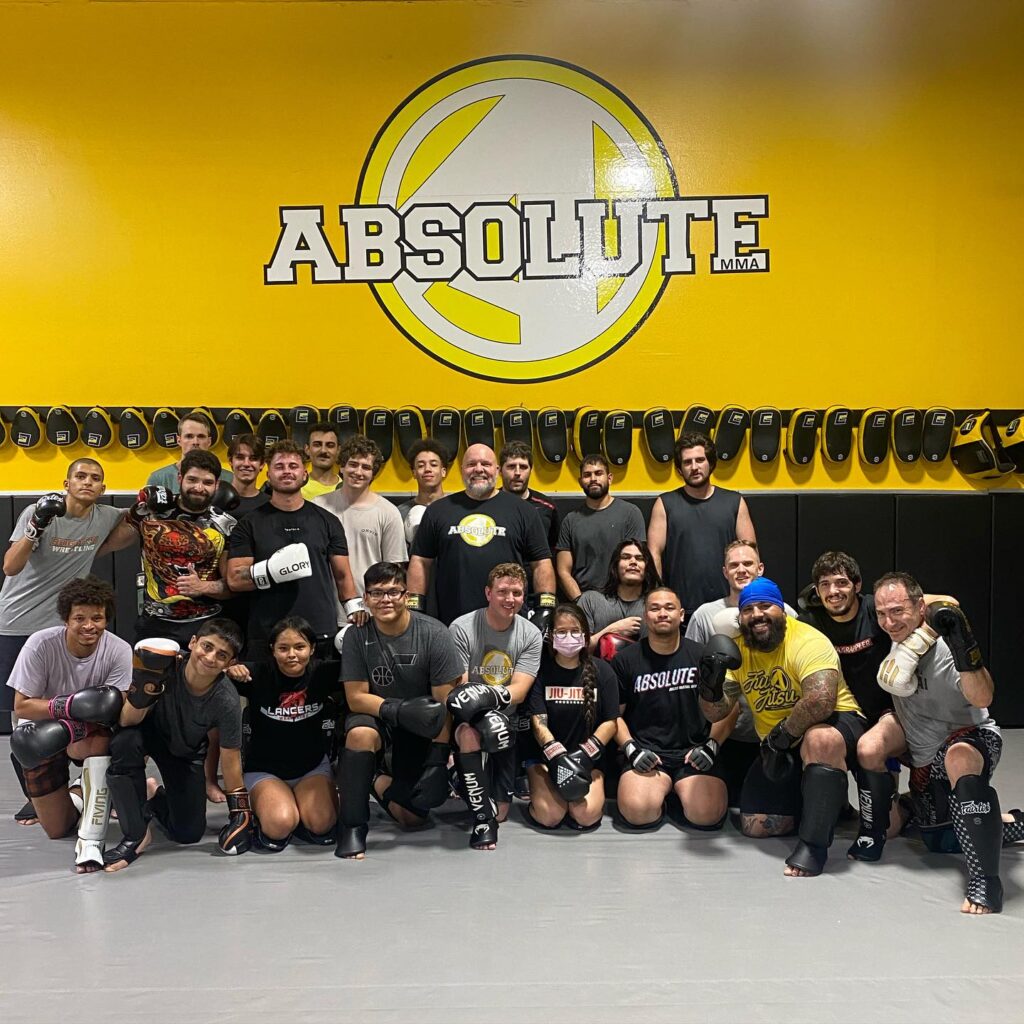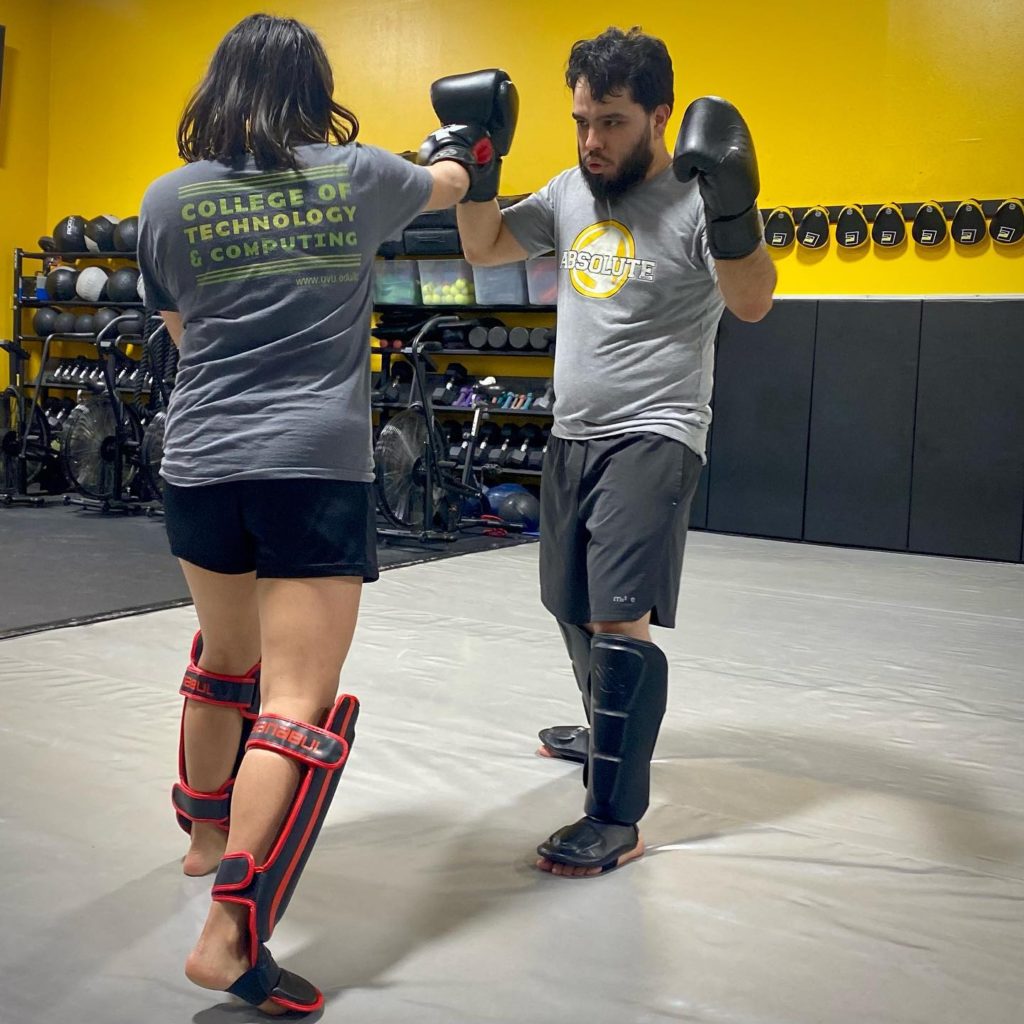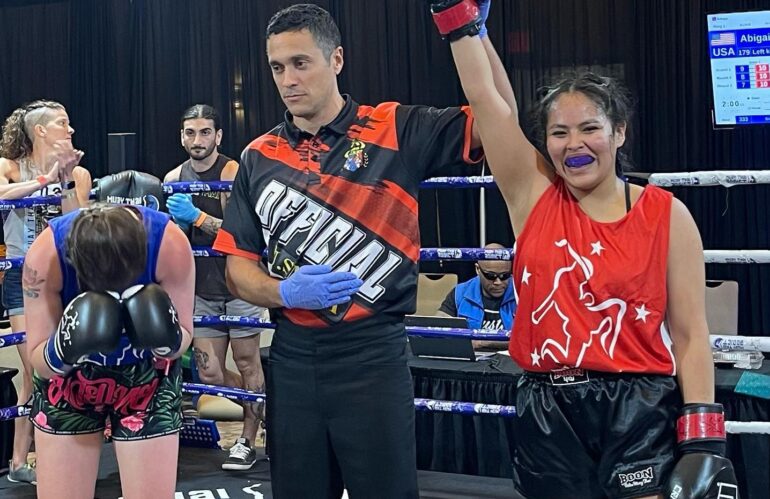
So you want to learn Muay Thai but are worried you won’t understand what’s happening in class? You’re in luck because we have the perfect Absolute MMA beginner’s guide to Muay Thai terms. In this blog post, we’ll introduce you to Muay Thai, discuss what to expect in class, and provide a simple glossary of Muay Thai terms/vocabulary.
What is Muay Thai and how did it start?
Focused on stand-up striking and clinching techniques, Muay Thai is an effective fighting system. Muay Thai can be referred to as Thai Boxing or the art of 8 limbs. Unlike Boxing which only allows for punches, Muay Thai utilizes punches, kicks, elbows, and knees. You have more weapons you can put to work for you in the ring and in self-defense.
Muay Thai’s roots go back centuries ago in Thailand. It’s a battle-tested Martial Art that has been used by Thailand’s fighting forces. Over the last several decades, Muay Thai has also been able to further develop into a Combat Sport. Muay Thai’s popularity has risen thanks to fighters achieving global fame like Rodtang Jitmuangnon, Janet Todd, Buakaw Banchamek.
Techniques from Muay Thai have proven to be successful in self-defense situations and Mixed Martial Arts. In our Muay Thai classes at Absolute MMA, you’ll learn proper techniques that will help succeed in whatever your goals are.
What can you expect in an Absolute MMA Muay Thai class?

At Absolute MMA, we have fundamental and advanced classes to help students achieve their individual goals. You’ll find that everyone aspires to be a fighter in our Muay Thai classes. Some people are looking for a new hobby or just want to improve their overall health. Others are wanting to cross-train since their main sport may be Judo or Jiu Jitsu.
Every class will begin with warmups. This typically starts off with jumping rope, shadowboxing, and dynamic stretching to assist with mobility. Proper warmups are key to mentally preparing for class while getting your heart rate up to train.
After warmups, you’ll learn techniques such as kicking, punching, defensive movements, and more. Techniques will constitute the majority of class time. If it’s a sparring class, you’ll spend most of the class time getting in rounds with your training partners to improve your skills.
Classes are wrapped with conditioning and/or cool-down exercises. Everything we do in our classes is focused on helping you get better.
Whatever your goals are, we can help you gain the momentum you need to be the best version of yourself!
Absolute MMA’s glossary of Muay Thai terms
Bag work: A key component of Muay Thai training is bag work. This is an encompassing term that covers striking rounds using a suspended heavy bag.
Cross: A straight punch thrown with your rear hand. If you’re an orthodox (right-hand dominant) fighter, your cross is a straight right-hand punch. The opposite is true if you’re a southpaw (left-hand dominant) fighter.
Gloves: Muay Thai gloves are necessary for bag work, mitt work, and sparring. When in doubt, buy 16 oz gloves for training. You may find that some glove brands are more comfortable than others depending on your personal preferences.
Handwraps: Handwraps are long strips of fabric with velcro designed to help support the bones in your hands. It’ll help reduce the chances of injuring your hands. Your Absolute MMA coaches will help you learn how to wrap your hands for every class.
Headgear: You don’t need headgear for bag work and most classes. Headgear is designed to reduce the chances of cuts on your face and concussions. You can wear it when sparring.
Heavy bag: A heavy bag is a piece of training equipment that allows you to develop power and work on striking techniques. Heavy bag work allows you to drill striking combinations while improving your physical conditioning.
Hook: A hook can either be thrown with your lead hand or rear hand with your arm bent at an angle near or at 90 degrees. Hooks can be used to deal damage to the head or body in a fight.
Jab: A jab is a straight punch with the lead hand. If you’re right-hand dominant/orthodox, your jab will be a straight punch with your left hand. The opposite is true if you’re a southpaw fighter/left-hand dominant.
Mouthpiece/mouthguard: This piece of equipment is used to protect your teeth and help you reduce the chances of receiving a concussion. It’s required to wear a mouthguard when sparring and competing.
Pad Work: Pad work requires your partner to hold pads for you or you to hold pads for your partner. Pad work is a great way to isolate individual skills or drill striking combinations.
Shadowboxing: Shadowboxing is when you practice your striking, footwork, head movement, and defensive skills without a live opponent. The use of shadowboxing can be a great way to improve technique and physical conditioning.
Shinguards: Shinguards allow you to throw kicks and check kicks while reducing the chances of injuries.
Teep: Teeps are also known as push kicks. It’s an effective way to create distance between you and your opponent.
Warmups: Every class at Absolute MMA begins with warmups. Warmups are a great way to safely ramp up for training and increase your overall mobility.
Are there more terms you can learn to be the most educated Muay Thai fighter you can be? The answer is yes. However, you’ll continue to learn what you need to know as you train consistently. Our coaches will answer your questions as you make it to class each week. Consistent training will lead to Muay Thai vocabulary becoming a normal part of your life.
Now that you’re more familiar with Muay Thai terminology, it’s time to start training!
Schedule your free Absolute MMA one-week trial now!

You’ve never been ready to begin your Muay Thai journey! There are more benefits to learning Muay Thai other than just learning how to fight. You’ll make new friends, gain more confidence, and improve your overall health. Sign up for your free trial and learn for yourself with Absolute MMA is the best MMA gym in Utah: https://absolutemma.com/free-trial/

